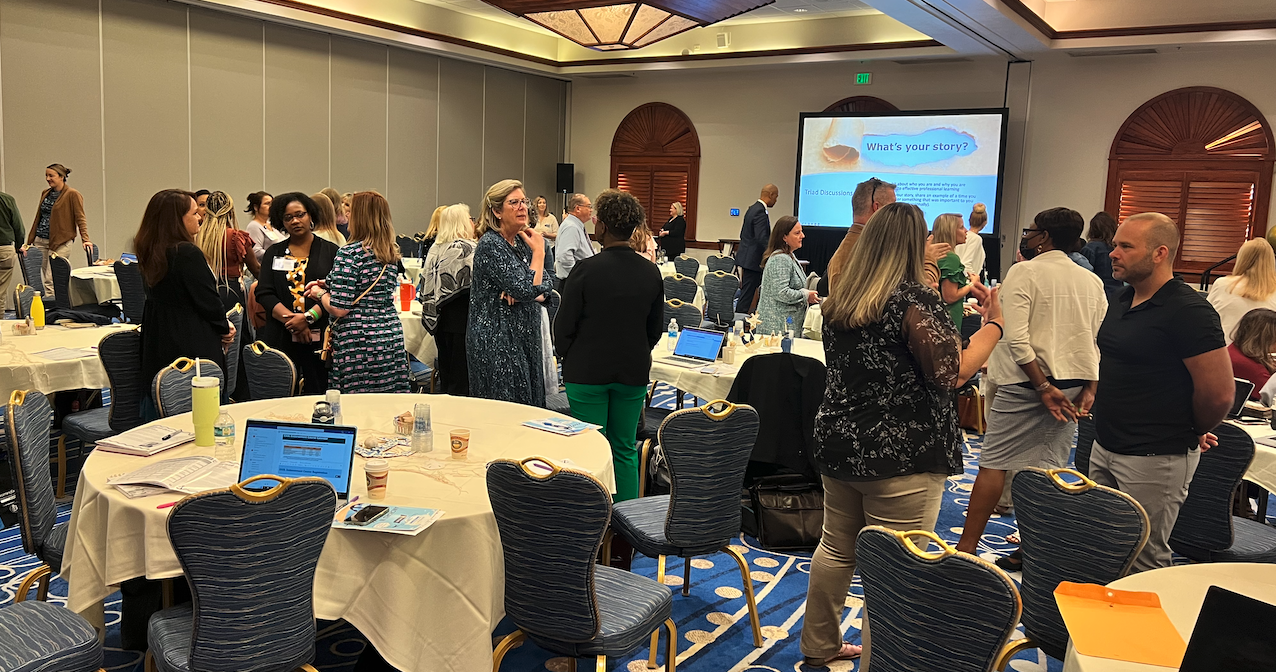Two Reasons Why Too Much Turn-and-Talk is a Problem
This month's blog post written by Naomi Church and Tammy Musiowsky-Borneman, is cross-posted with Plan Z Professional Learning Services.
We’re finding that this is an unpopular opinion, but we believe it is absolutely possible to have too many turn-and-talks in professional development (PD). Naomi (@GrowingMindsK12) posed this question on X (formerly Twitter). Feel free to join the online discussion and share your thoughts.
If you are not already familiar, turn-and-talk is an instructional routine in which a presenter or teacher asks a question and then learners are asked to turn and talk to a partner next to them to respond to the question or prompt. These can be a great way to increase involvement as opposed to calling on a single person for a response. However, we propose that there are two main problems when excessive turn-and-talks are used in PD.
In PD, such as a conference breakout session that only lasts 60 to 90 minutes, the bottom line is that we most likely chose that session because we want to hear from that presenter (famous author, etc.), we’re very interested in the topic, or both. While we value peer input, there has to be a balance between hearing from the presenter and just talking to the people next to us.
It’s only interactive at the most surface level, unless protocols or parameters are in place to help structure the engagement. We’ve been told to involve participants in the learning process and of course that’s true. Our point is that there are other ways to engage participants besides just the trusty turn and talk and there may even be better ways.
Participants engaging at the Learning Forward Florida Fall Conference (2023)
UDL Checkpoint 4.1 is Vary the methods for response and navigation. In effective professional learning there are a variety of means for interacting with and processing content. Here are some things to consider:
Change up the grouping configurations to leverage the strengths of each configuration. Some examples include: whole group, small group, partner, individual. Not every interaction in a breakout session has to be with a partner. How else might folks group together to share and process information?
Leverage technology for interaction and reflection. Some people appreciate having time, even if it’s just a minute or two, to think something through, make connections and consider applications. It can be hard to figure out your own thoughts around a topic when someone else immediately starts talking and sharing their opinions. Technology can also minimize a barrier for some participants who are shy, not confident in their English speaking abilities, or just need additional think time. Some tech friendly options include: Padlet, Jamboard, Quizizz, Kahoot, Mentimeter.
Use physical movement to enhance instruction. Some of our favorites include four corner activities where participants have to move to a corner of the room to participate, the use of sign language to respond, and the Kagan structure called Take Off Touch Down in which participants respond by standing up and sitting down. Naomi had the pleasure of participating in Kristen Acosta’s session at NCTM 2023 in DC entitled Hanging Math Out to Dry: Clotheslines Build Number Sense. In this engaging session, Kristen didn’t just talk about and show pictures of these clotheslines, she actually had two physically set up in the room and every single participant had the opportunity to get up and experience the learning first hand. This multi-sensory approach of seeing, hearing and doing helped many participants more deeply understand and connect with the content.
Participants engaging in a four corners activity.
Professional learning and andragogy are both an art and a science. There has to be a carefully constructed balance between learning new content, making connections to previous knowledge, interacting with, processing and reflecting upon learned content. As consultants who study and provide intentionally-planned professional learning opportunities applying the principles of Universal Design for Learning, we too are on journeys of continuous improvement. We believe that nearly every learning opportunity we provide is better than the one before as we learn from our mistakes, and from participant reactions and feedback. We often look back at older presentations and cringe…but we do know that each one of those was our best at the time. Luckily our best constantly gets better!
Before you deliver your next conference breakout session or workshop, consider how participants are engaged. While turn-and-talks have their place, we are going to be so bold as to say that there probably should not be more than three in an hour. Can you change up the grouping configurations? Can you leverage technology in some capacity to promote engagement? Can you model the use of physical movement to enhance instruction? With small yet intentional shifts in participant engagement, you provide not only valuable content, but also model effective, interactive strategies that participants can bring back to try in their learning environments.


